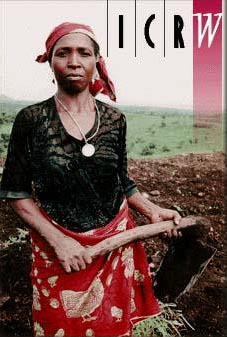
Recent estimates show that 70 percent of the world's poorest are women
International Center for Research on Women (ICRW)

In the last decade, the importance of womenâs and adolescent girlsâ economic participation and empowerment has been recognized by several international summits, including the 1993 UN Conference on Human Rights, the monitoring and implementation of the Convention on the Elimination of All Forms of Discrimination Against Women (CEDAW), the 1995 Fourth World Conference on Women, and the agreements made at the five-year review of the 1994 International Conference on Population and Development (ICPD) and the UN Millennium Summit. While policies and programs to increase womenâs economic opportunities have been laid out, they have yet to be translated into action. How can women and adolescent girls benefit from current economic trends that offer room for growth, and access to economic resources and rights? How do we get from here to there?
Women are key economic contributors, with their income directly benefiting their children and households. Yet, women and girls continue to constitute the majority of those living in poverty. Why? The reality is that many women in developing countries work long hours in low-wage, insecure jobs and continue to lack access to key economic resources such as ownership of land and property. The strain of these factors weighs heavier on the poorer families, with the burden of earning more income then falling onto children. Presently, nearly 120 million young people around the world work full-time÷61 percent of all adolescents in Asia, 32 percent in Africa, and 7 percent in Latin America÷to support themselves and their families.
The need for action to economically empower women and girls is all the more pressing today because the current cohort of adolescent girls is the largest ever in the worldâs history. In many poor families, adolescent girls often do the housework so that their mothers can earn income elsewhere÷they take care of siblings, tend the home, and prepare the food. In times of great economic need, girls, like their mothers, play the dual role of caretaker and wage earner, putting in long hours working both in and outside the home, but earning little income. In order to fulfill these roles, girls from poor households are the first to drop out of school and miss out on the education and training that could enable them to have better lives.
********
Where Are Adolescent Girls and Women from Poor Households Working?
the number of women who are the sole supporters of families is on the rise in many regions of the world (ranging from 13 percent in South Asia to 36 percent in the Caribbean). Trends show these households are more likely to be poor than those supported by male income. With the escalating Global economic shifts in the last two decades have changed the way women in developing countries earn income. Women constitute up to 75 percent of workers in the shadow economy known as the informal sector, with the vast majority still working in low-paying, seasonal, and insecure jobs. In addition, Women comprise a substantial and growing portion of the poor ÷recent estimates show that 70 percent of the world âs poorest are women. Nearly 120 million young people around the world work full-time.
**********
INFORMATION BRIEF MARCH 2001
AIDS epidemic, there is also a tragically increasing number of adolescents who maintain households today and will continue to do so in the future. Unless viable options for better jobs and opportunities to access key economic resources are created, as tomorrowâs heads of households, adolescent girls will inherit the poverty that they grew up in and pass it on to their children.